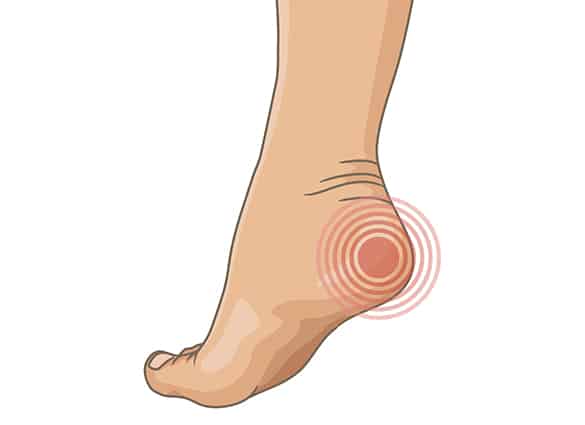
What is Sever's Disease?
Sever’s disease (or Calcaneal Apophysitis) is a painful condition of the heel affecting children, usually at the beginning of the growth spurt in early puberty.
It is caused by inflammation at the growth plate at the back of the heel, adjacent to the Achilles tendon attachment. This is one of the most common causes of heel pain in school-aged children.
Physically active children aged between eight and fourteen years old are most at risk of developing pain from Sever’s disease. It is common among children involved in soccer, little athletics, gymnastics, basketball and netball but can affect children involved in any running or jumping activity. Boys seem to be more commonly affected than girls.
What causes Severs Disease?
At birth, most of our foot bones are still made of cartilage, which ossifies (becomes bony) over the first few years of life. At the back of the heel, there is a growth plate that is attached to the main body of the heel bone by a cartilaginous join. At about the age of 14-15 years, this area of cartilage between the growth plate and the heel bone ossifies, fusing the area to the heel. Sever’s disease occurs when there is too much motion or strain across the growth plate, resulting in this area becoming inflamed and painful.
There are many contributing factors that cause strain across the growth plate, making your child prone to developing Sever’s disease. These include:
- Repeated minor trauma to the growth plate from running or jumping sports
- Tight calf or hamstring muscles
- Rapid growth spurts can lead to the leg muscles becoming tight, increasing tension on the growth plate
- Tight Achilles tendon – the Achilles tendon attaches to the back of the heel adjacent to the growth plate
- Poor foot posture – may increase the strain on the growth plate
- Footwear with a very low heel pitch (eg soccer boots)
- Unsupportive or unstable footwear with poor shock absorption at the heel
- Running or playing sport on hard surfaces
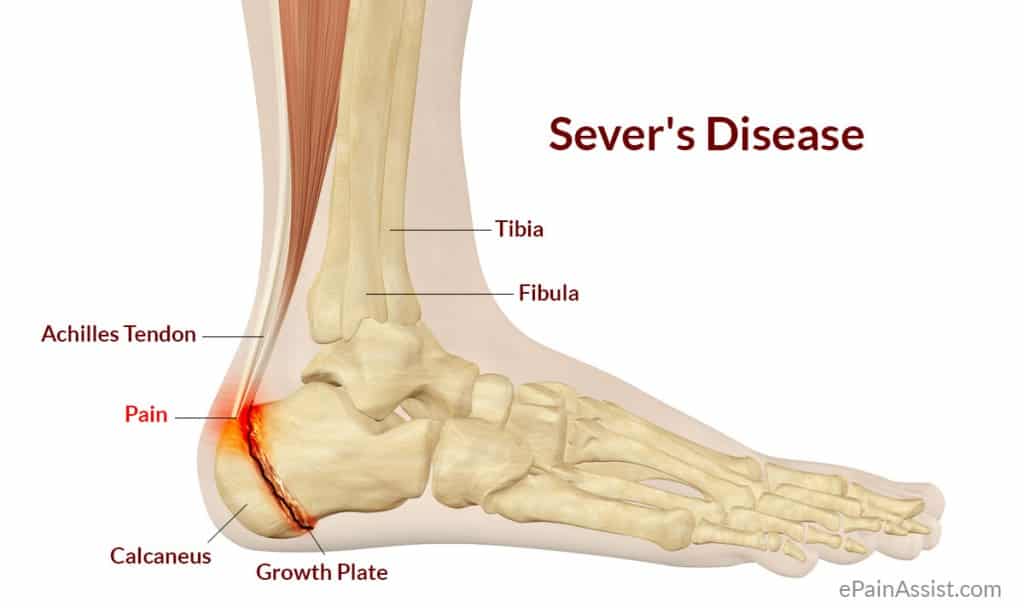
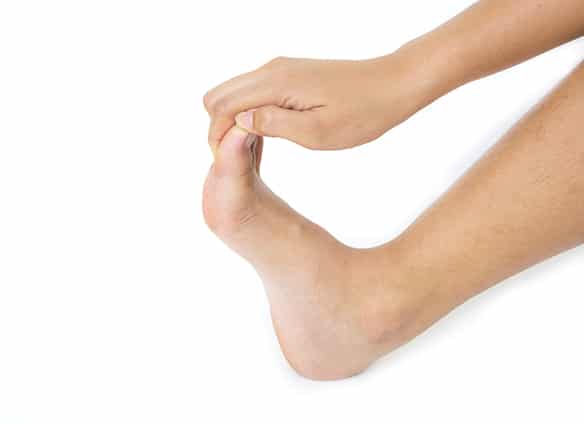
What are the symptoms of Severs Disease?
Symptoms of Sever’s disease, mostly pain at the back of heel, usually occur during and after sporting activity, and usually disappear with rest. In some cases, children may find it difficult to place pressure on their heels, and begin walking on their toes to gain relief. For some children, the heel pain will persist until the next morning, causing some stiffness or hobbling on first arising. Some children may experience mild swelling at the back of the heel.
How is Sever's disease diagnosed?
Your podiatrist will take a comprehensive medical history and perform a physical examination including a gait analysis. The assessment will include:
- Foot posture assessment
- Joint flexibility (or range of motion)
- Biomechanical assessment of the foot, ankle and leg
- Foot and leg muscle strength testing
- Footwear assessment – school shoes and athletic footwear
- Gait analysis – to look for abnormalities in the way the feet move during gait
- Pain provocation tests e.g. calcaneal squeeze test
- X-rays are not usually required to diagnose Sever’s disease.
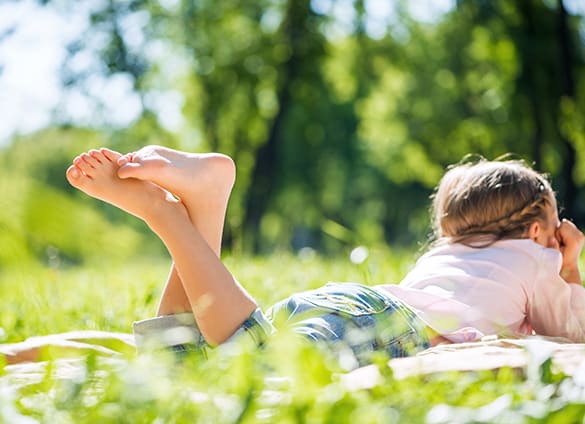
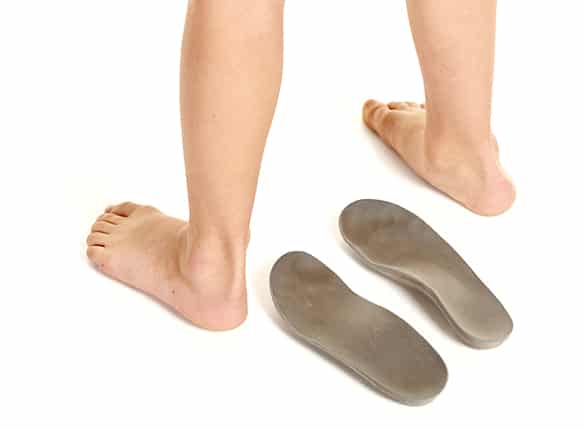
How is Sever's Disease treated?
If your child suffers from Sever’s Disease, it is important you take him or her to see your podiatrist, as it can take some time for the condition to completely resolve. Possible treatment options for Sever’s disease may include:
- Rest from aggravating activities
- Ice massage to reduce localised inflammation
- Heel lifts placed inside the shoe to reduce the strain on the growth plate
- Athletic footwear advice – poor footwear can sometimes be the major contributing factor in the development of Sever’s disease
- Orthotic therapy – if your child has an abnormal foot posture that is contributing to the development of Sever’s disease, this will need to be treated with orthotic therapy. Orthotics for Sever’s disease may need to be custom made orthotics (custom-made) or non-prescription foot orthotics depending on your child’s foot posture
- Exercise program – stretching exercises to improve flexibility of the leg muscles and strengthening exercises to address any foot muscle weakness or imbalance
- Avoid barefoot walking, hill running and training on hard surfaces
What should I do if my child has Sever’s disease?
Sever’s disease is a self-limiting problem, because as your child grows the growth plate will eventually fuse with the main body of the heel bone. This happens at about 14 -15 years of age. Once foot growth is complete and the growth plate has fused, the symptoms will resolve. In the meantime, treatment by your Podiatrist will help your child return to normal sporting activities without heel pain slowing him/her down.
Our podiatrists in Brisbane Northside include specialists in children’s foot conditions. If you think your child may have Sever’s disease, or you are at all concerned about the posture of their feet, contact us.


